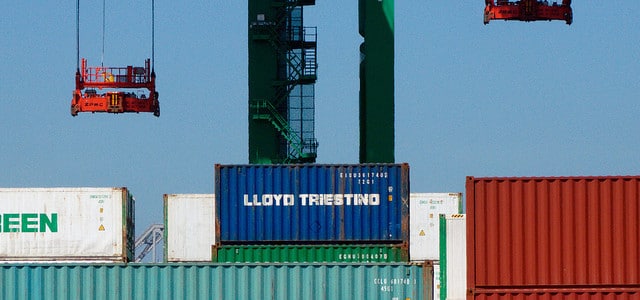Published
India, the WTO Bali Package, and Global Value Chains
Subjects: Regions Sectors Services South Asia & Oceania WTO and Globalisation

India’s economy has become much more liberal over the last 20 years. Its applied tariff rate has gone down from a high 113% in 1990-91 to a low 13.7 by taking a simple average although some tariff peaks still remain, particularly in agriculture. At the same time India has started to deregulate some of its services sectors such as retail and telecom services, even though this is mainly for cross-border services trade. Besides, India has proved very successful in exporting Business Processing Outsourcing services. Probably thanks to this, India’s trade profile has resulted in the fact that its participation in world exports for services is higher than for goods, namely 3.32% compared to 1.61%.
India has also been an active user of Preferential Trade Agreements (PTA) as a way to liberalize trade. It has concluded agreements with, amongst others, Chile, Mercosur and ASEAN. India’s most important preferential agreements at the moment are probably with Japan and Korea seen each of their market sizes. This has benefited firms on both sides: trade costs are lowered whiles companies are able to reach economies of scale because of larger common markets. Other PTAs are under negotiation. Some of them could have significant economic importance such as the EU-India Strategic Partnership, but negotiations are on hold. India’s reach to the US does not go any further than a ‘commercial dialogue’ or a ‘trade policy forum joint statement’. Probably not much will come out of these preferential intentions as both the EU and the US are occupied with other priorities.
In part, the regional search for trade agreements reflects the current state of play within the World Trade Organisation (WTO). To date no ‘big deal’ could be concluded as part of the Doha Development Round as we have seen in 1994 when the Uruguay Round was finalised. It seems more and more likely that the Doha Round will go down as an attempt that was one step too far. On the one hand, this is the result of the fact that in the meantime the world has changed with rising emerging powers. On the other hand, in 2008 a Doha deal was nearly concluded if not precisely some emerging countries, notably India, had been on the defensive side. They demanded more support for their agricultural sectors, something the developed world was unable to accept.
Meanwhile, however, some progress seemed to have been reached. In December 2013 the so-called ‘Bali-package’ was born providing reassurance that multilateral trade negotiations are successful, albeit slightly. No major advancements were made but to down-pay the package is neither appropriate. On the contrary, next to provisions on lowering import tariffs and subsidies in agriculture it includes important issues such as trade facilitation which aims to reduce trade costs regarding red-tape and to simplify customs procedures. This is of major significance to especially emerging countries such as India provided they seize the opportunity to participate in today’s global trade patterns. Yet again, however, India now appears to come back on the deal by showing a defensive attitude towards the package by demanding better conditions on food stock piling and subsidizing. If pressing ahead, this will mean would mean missed chance for India.
Typically trade is thought of as a final product travelling from one country to another where the good is consumed. Although this still holds true for some products, in many sectors this is not the case anymore: input goods cross borders many times before they become a final good. This is the world of global supply chains or, as more recently called, global value chains. Each time an input is being exported after processing, some “net” added value is created, which in turn contributes to the national economy. Some sectors, of course, carry higher value added than others depending in which the country is specialising. For instance, in general services hold higher value added than some goods inputs such as textiles or food industry. At first sight, India appears to do relatively well in this regard.
However, although India is specialising in services it turns out that it actually concentrates too much on lower-end activities of the services value chain, such as Customs Relationship Management or Enterprise Resource Management. What’s more, India’s value in services is created for end-users, not as inputs for other manufacturers – a reflection of its poor participation of global value chains. India would do well to, first, upgrade its current business services sector to higher-value added activities such as software R&D services, business consulting services or business analytics; and second, to diversify its services input-set by deregulating some of its domestic services sectors such as professional services, retail and transport sectors for foreign investors.
More important, as the pattern of trade is changing the concept of trade costs is altering too. In essence, the concept of trade policy has been redefined. “Old” trade policy is still important: even low applied MFN tariffs have a considerable effect in a world organized around global supply chains as tiny mark-ups can have tremendous effects on the costs of goods crossing numerous amounts of borders every day. Seen from this perspective, India’s tariffs in goods are still pretty high. Still, what is of greater importance for India’s global competitiveness is the cost of managing the international segmentation of production, linking its own internal productions processes to global markets. Here India’s score is rather modest. Its ranks 54 on the World Bank’s Logistics Performance Index which measures the ease of input transhipments in the global supply chain. Particularly logistics competences, customs procedures and the general state of India’s infrastructure could be much improved.